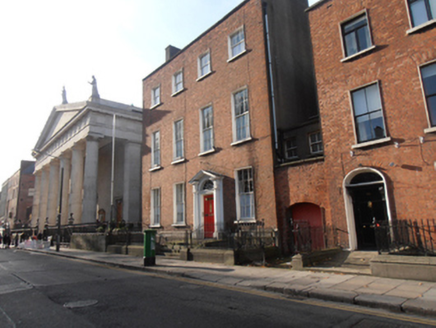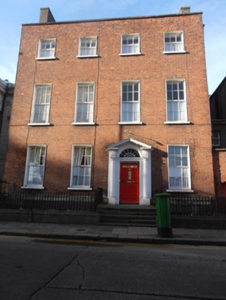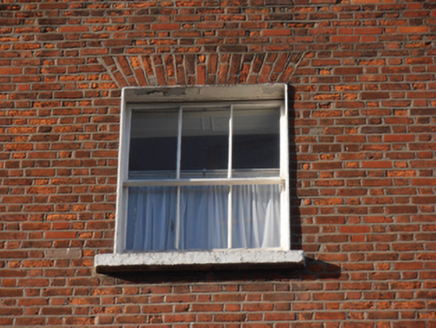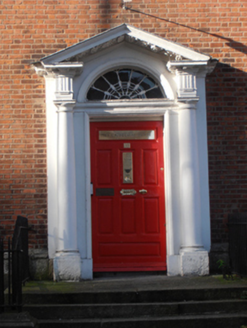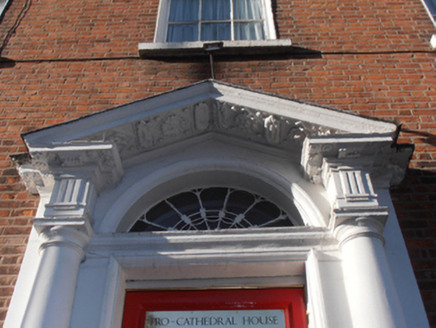Survey Data
Reg No
50010229
Rating
Regional
Categories of Special Interest
Architectural, Artistic
Previous Name
Saint Mary's Presbytery
Original Use
Presbytery/parochial/curate's house
In Use As
Presbytery/parochial/curate's house
Date
1820 - 1830
Coordinates
315994, 234824
Date Recorded
30/10/2011
Date Updated
--/--/--
Description
Attached four-bay three-storey presbytery over raised basement, built c.1825. Built in association with adjacent Pro-Cathedral. Camber carriage arch to single-storey curtain wall to north. M-profile pitched slate roof behind parapet with squared granite coping and terracotta ridge tiles. Rendered chimneystacks to each gable, replacement downpipes to side (north and south) elevations. Red brick walling laid down in Flemish Bond, granite ashlar walls to basement level with moulded granite ashlar plinth course above. Square-headed window openings with gauged brick voussoirs, patent rendered reveals, granite sills and timber sliding sash windows. Three-over-three pane arrangements to third floor, six-over-six to ground and first floors, two-over-two to the basement with iron grille. Round-headed door opening within pedimented painted stone doorcase in the Pain style. Timber panelled door flanked by Doric columns to stepped lintel cornice, decorative leaded fanlight within open pediment supported on fluted square caps, floral motifs to pediment soffit. Door opens onto granite platform with cast-iron boot-scrape and five granite steps. Platform and basement area enclosed by replacement wrought-iron railing on moulded granite plinth wall. Street-fronted. Post box dating from reign of Edward VII to fore.
Appraisal
Marlborough Street was opened up from 1700 by the Moore family, earls of Drogheda, and named in honour of the Duke of Marlborough who was actively fighting wars at this period. This presbytery is adjacent to Saint Mary's Catholic Pro-Cathedral which was opened in 1825. Like many Catholic churches built before Catholic Emancipation (1829), the Pro-Cathedral, intended as a temporary cathedral, is located discreetly down a side street. While the Pro-Cathedral was under construction for a period of more than ten years, the presbytery appears to date from the early years of the nineteenth century. Very well maintained, Pro-Cathedral House is a fine example of an early nineteenth-century townhouse and it is also of considerable social significance as representative of the changing role of the Catholic population in the nineteenth century.
